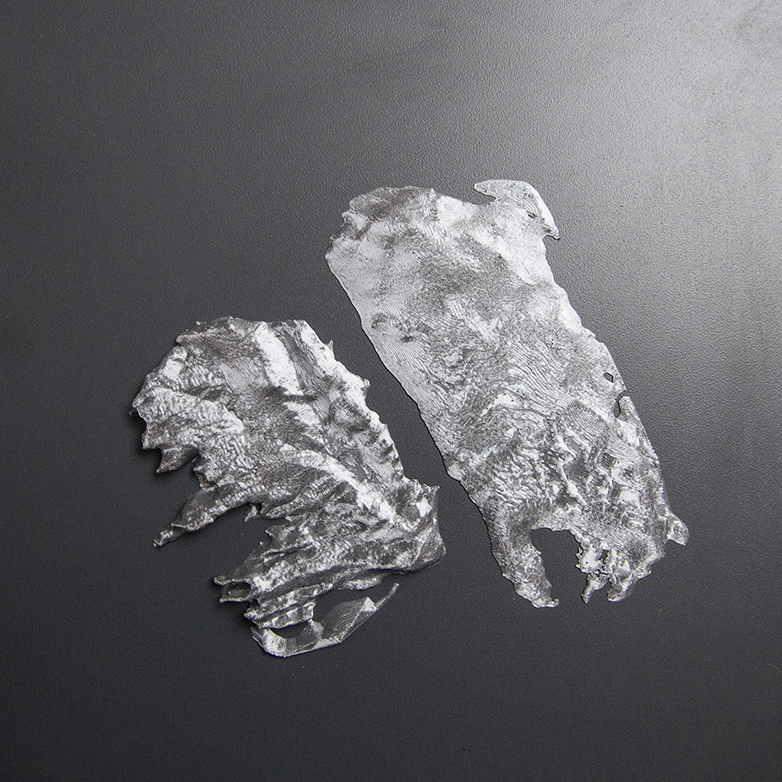











reproducing nature | 3-D scan and print | ca. 20 x 15 x 5cm | 2019
The interdisciplinary project reproducing nature started 2019 in Iceland. It formed in cooperation with Prof. Jochen Orso, Reutlingen University.
Iceland is inhabited by the biggest glacier in Europe, Vatnajökull. It is also home to smaller glaciers like Mýrdalsjökull. It´s dozens of glacier tongues reach down to the valley and sometimes form lagoons. One of them is located in the South and called Sólheimajökull (translated: the glacier where the sun is at home). By calving the glacier releases – sometimes volcanic ash black, millennial – icebergs onto the lagoon.
Four icebergs of Sólheimajökull´s lagoon were chosen and circled with a filming drone. The data was fed to a program that rebuilt the surface of the iceberg and constructed a 3D model. This technique is called photogrammetry - a technique originally coming from Geodesy but also used for the conservation of cultural heritage as sculptures. After a 3D model was extracted, a 3D printer was used to print a mini iceberg of the scanned original.
The research was guided by the fascination for glaciers, by their age, beauty and strength. It is also guided by fear, as glaciers can be hazardous and even deadly – and by sadness, because they are melting way too fast. The idea was to scan the icy dying monuments in order to conservate them as 3D prints in the form they were found. By now, the uniques are already water.
With permission of Vatnajökulsþjóðgarður / Vatnajökull National Park